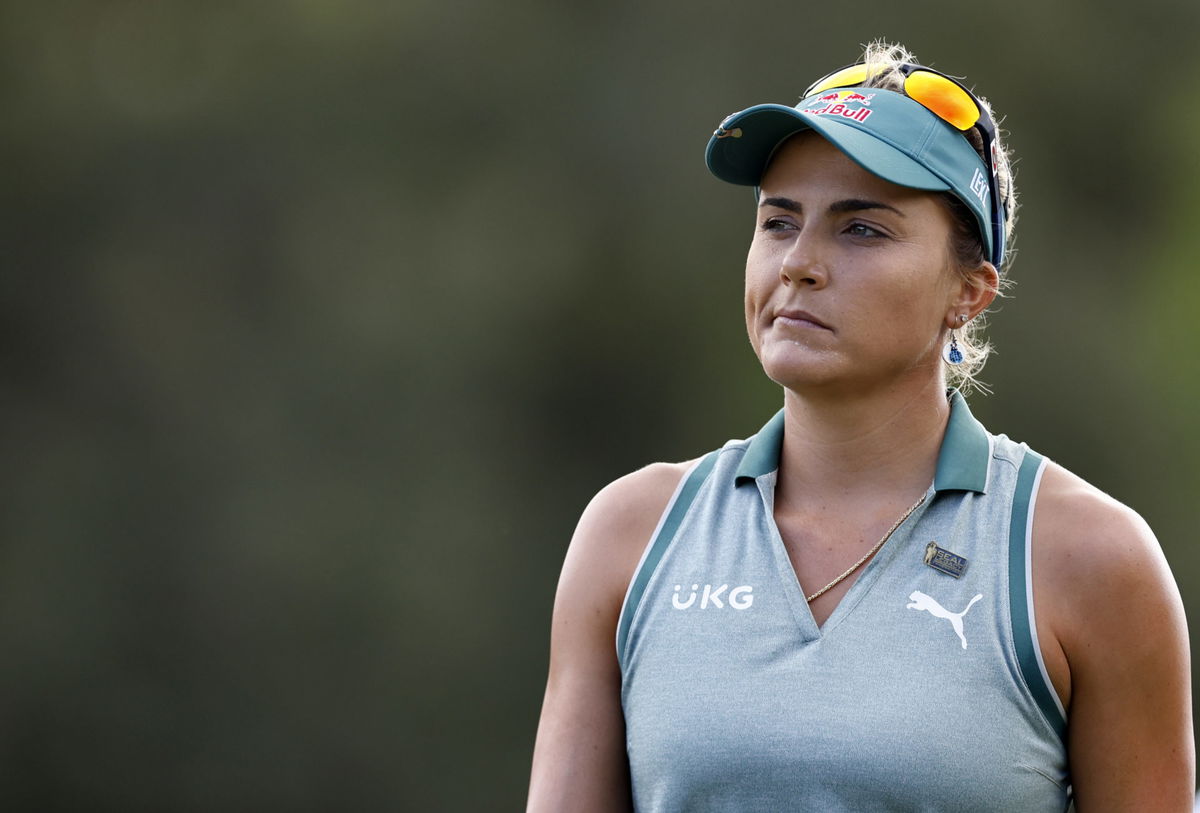
Getty
NAPLES, FLORIDA – NOVEMBER 21: Lexi Thompson walks from the third tee during the final round of the CME Group Tour Championship at Tiburon Golf Club on November 21, 2021 in Naples, Florida. (Photo by Michael Reaves/Getty Images)

Getty
NAPLES, FLORIDA – NOVEMBER 21: Lexi Thompson walks from the third tee during the final round of the CME Group Tour Championship at Tiburon Golf Club on November 21, 2021 in Naples, Florida. (Photo by Michael Reaves/Getty Images)
Slow play is an issue on the LPGA Tour as it is. Now, add difficult course setup decisions, and that’s a recipe for disaster. The latter continues to create impossible conditions that force even the fastest competitors to crawl through their rounds. This reality became crystal clear at the KPMG Women’s PGA Championship at Fields Ranch East. Stacy Lewis, a Tour veteran, had to step forward to defend players facing criticism over the glacial pace.
Watch What’s Trending Now!
She pointed directly at the course setup as the real culprit behind the timing nightmares plaguing the $12 million major championship. The featured Peacock group of Lexi Thompson, Yealimi Noh, and Yuka Saso endured more than six hours to complete their opening round. Additionally, players faced 25-minute waits on par 3s throughout the day. Several groups backed up significantly on holes 8 and 13, creating a domino effect across the entire field. Lewis specifically criticized the hole locations and tee placements that created these unplayable conditions.
Lewis made her stance clear after missing the weekend cut at Fields Ranch East. Officials placed hole locations on severe slopes while simultaneously setting up longer tee shots in windy conditions. “Today it was just hole locations again, on sides of hills,” Lewis explained about the problematic pin positions. “Then you throw the wind in there, there was no way to stop it on No. 8 again today. We should be playing the front of that tee, probably 120 yards… can’t hold the green.” The eighth hole exemplified the setup problems perfectly.
ADVERTISEMENT
Officials positioned the tee at 157 yards on Friday, yet less than 20 percent of the field hit the green in regulation. Even quality approach shots rolled off the putting surface due to the combination of severe slopes and wind conditions. The slow-play issue persisted into the second round, according to Lewis’s assessment of the tournament conditions. Her frustration stemmed from watching officials consistently move tees back to achieve specific yardage numbers rather than creating playable conditions. Lewis believes proper course setup should prioritize strategic design over distance. As a player, she doesn’t care if 12 under wins a major championship. However, she deeply cares whether the golf course plays the way it was designed to be played.
The situation highlighted how poor setup decisions compound slow-play problems that happened in R1 as well. The timing nightmare reached such extremes that Golfweek’s Beth Ann Nichols posted her frustration on social media for the second time in a row, writing, “It’s legit almost 9 pm and all the scores aren’t in here in Texas.” Her post, which garnered over 2,100 views, captured widespread sentiment among fans and media alike.
It’s legit almost 9 pm and all the scores aren’t in here in Texas.
— Beth Ann Nichols (@GolfweekNichols) June 21, 2025
ADVERTISEMENT
The reaction reflected growing concern about the pace problems in professional golf. One prominent response summed up the viewing experience perfectly: “How much longer will the LPGA put up with this? I can’t even watch anymore.” Her passionate defense raises important questions about the philosophy behind the tournament setup. However, the KPMG controversy represents just one symptom of a much larger crisis currently plaguing professional golf.
Top Stories
LIV Golf Issues Statement as Pro Announces Shock Retirement After Getting Relegated

Calls Mount Against PNC Championship TV Coverage as Tiger Woods & Charlie Woods’ Absence Felt

Praise Pours In for Annika Sörenstam After Her Gesture Toward Matt Kuchar and Son Despite PNC Loss

Amanda Balionis Receives Wake-Up Call That She Didn’t Expect to Face at 39

Johnson Wagner Admits Guilt for Making Jordan Spieth Miss Out on Rare PGA Tour Record

ADVERTISEMENT
LPGA and PGA Tour battle mounting slow-play crisis
You see, both major tours face mounting criticism over rounds that regularly exceed acceptable timeframes. Harris English, Andrew Novak, and Aldrich Potgieter took 5 hours and 29 minutes to complete their final round at the Farmers Insurance Open earlier this season. Similarly, the American Express tournament saw closing rounds stretch nearly six hours, prompting Dottie Pepper to criticize the pace during CBS coverage publicly.
Recent viewership data reveal the scope of this growing problem, which affects golf’s entertainment value. TV audiences have declined across golf in 2025. The American Express final round drew just 232,000 viewers, down 57 percent from the previous year’s 534,000. These numbers reflect growing fan frustration with marathon viewing experiences that even the most dedicated golf enthusiasts struggle to endure.
The LPGA implemented stricter penalties in February 2025 to combat the issue, while the PGA Tour continues struggling with enforcement. Players now face stroke penalties for exceeding time limits by six seconds or more on the women’s tour. Nelly Korda welcomed the tougher stance, saying, “Finally,” when asked about the changes. Conversely, PGA Tour officials haven’t issued a stroke penalty for slow play since 2017, despite chronic problems affecting their product.
ADVERTISEMENT
The crisis demands immediate action from golf’s leadership to preserve the sport’s mainstream appeal. Will professional golf finally address these systemic timing problems before losing more viewers permanently?
ADVERTISEMENT
ADVERTISEMENT
ADVERTISEMENT

